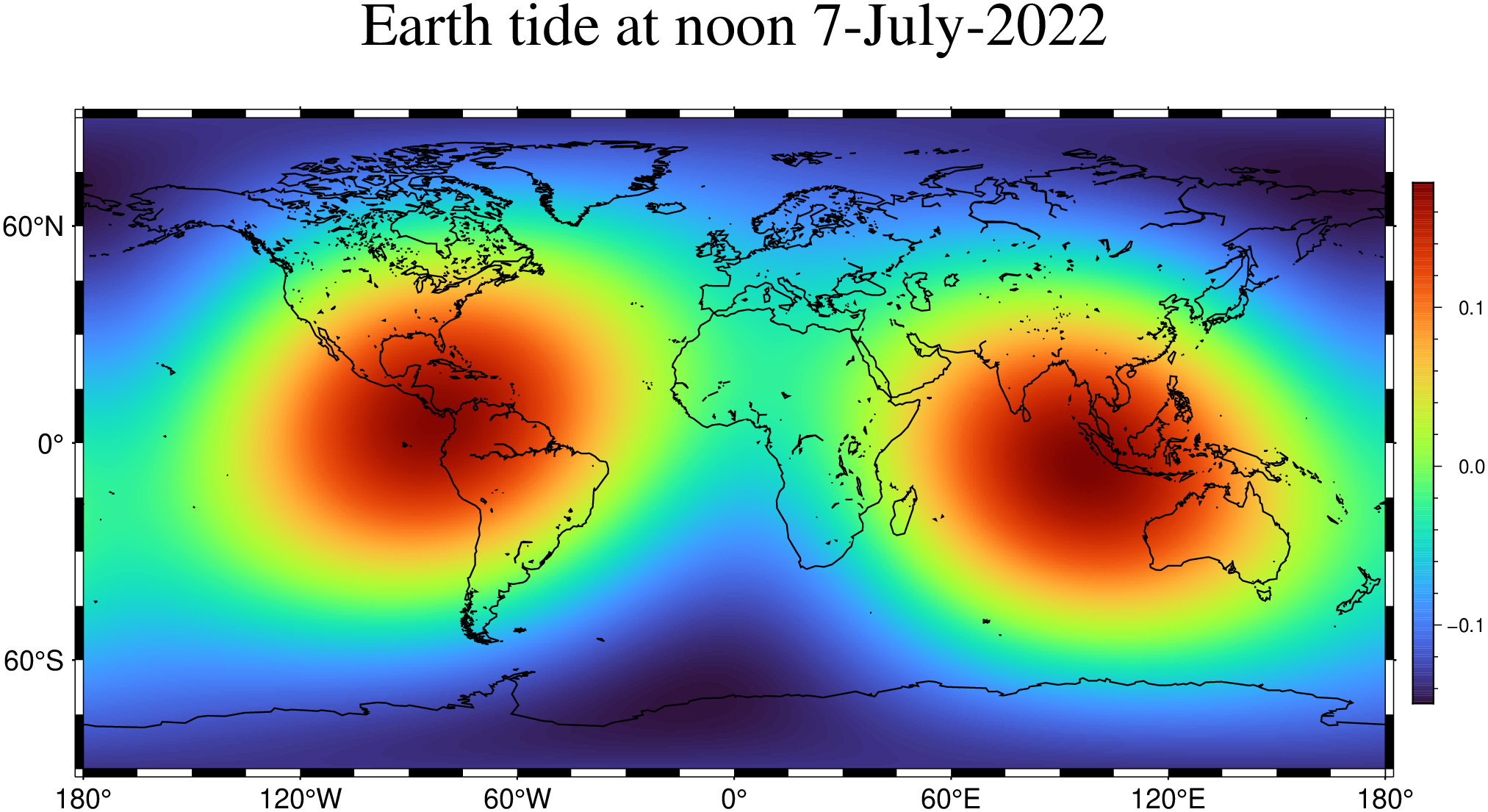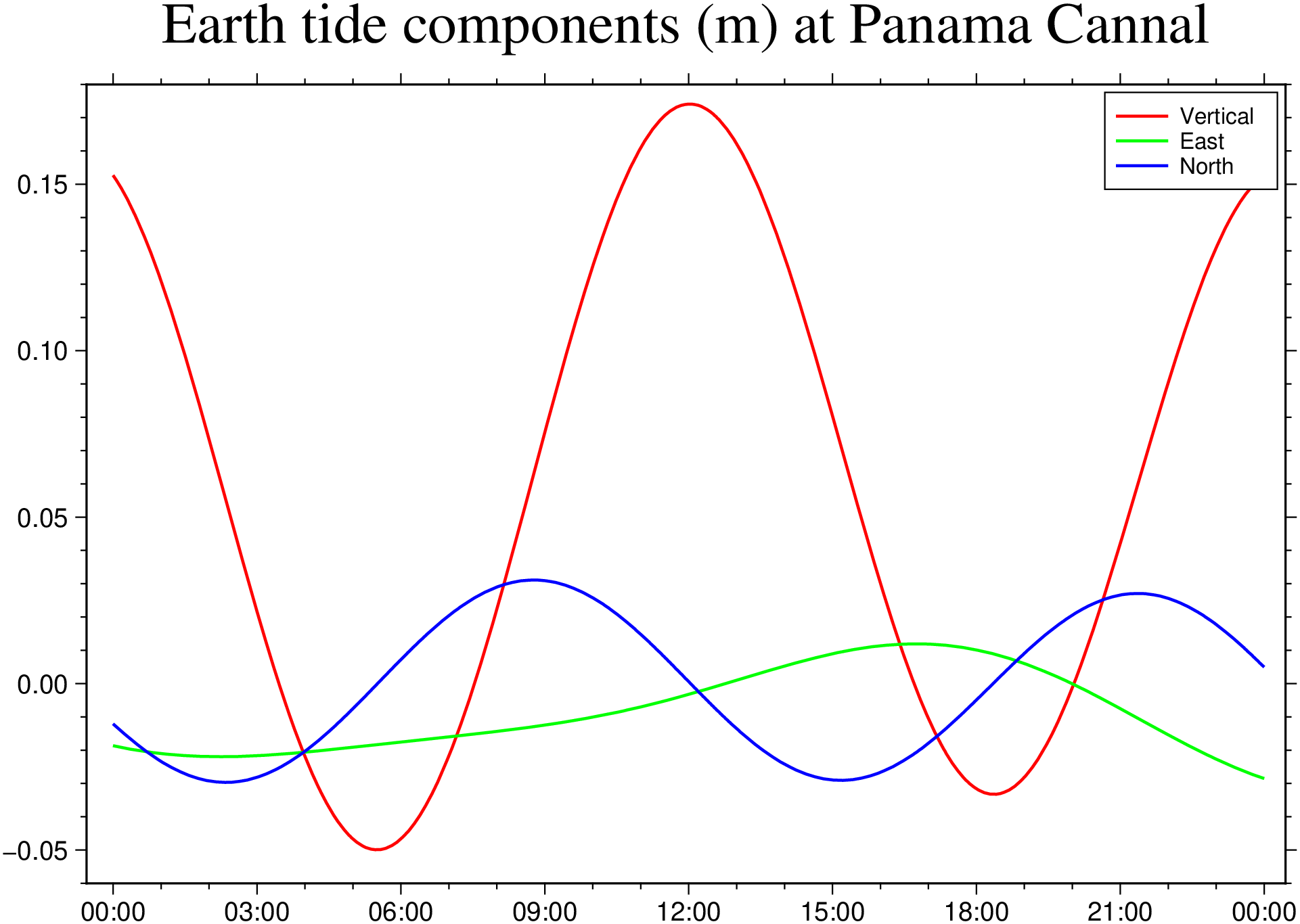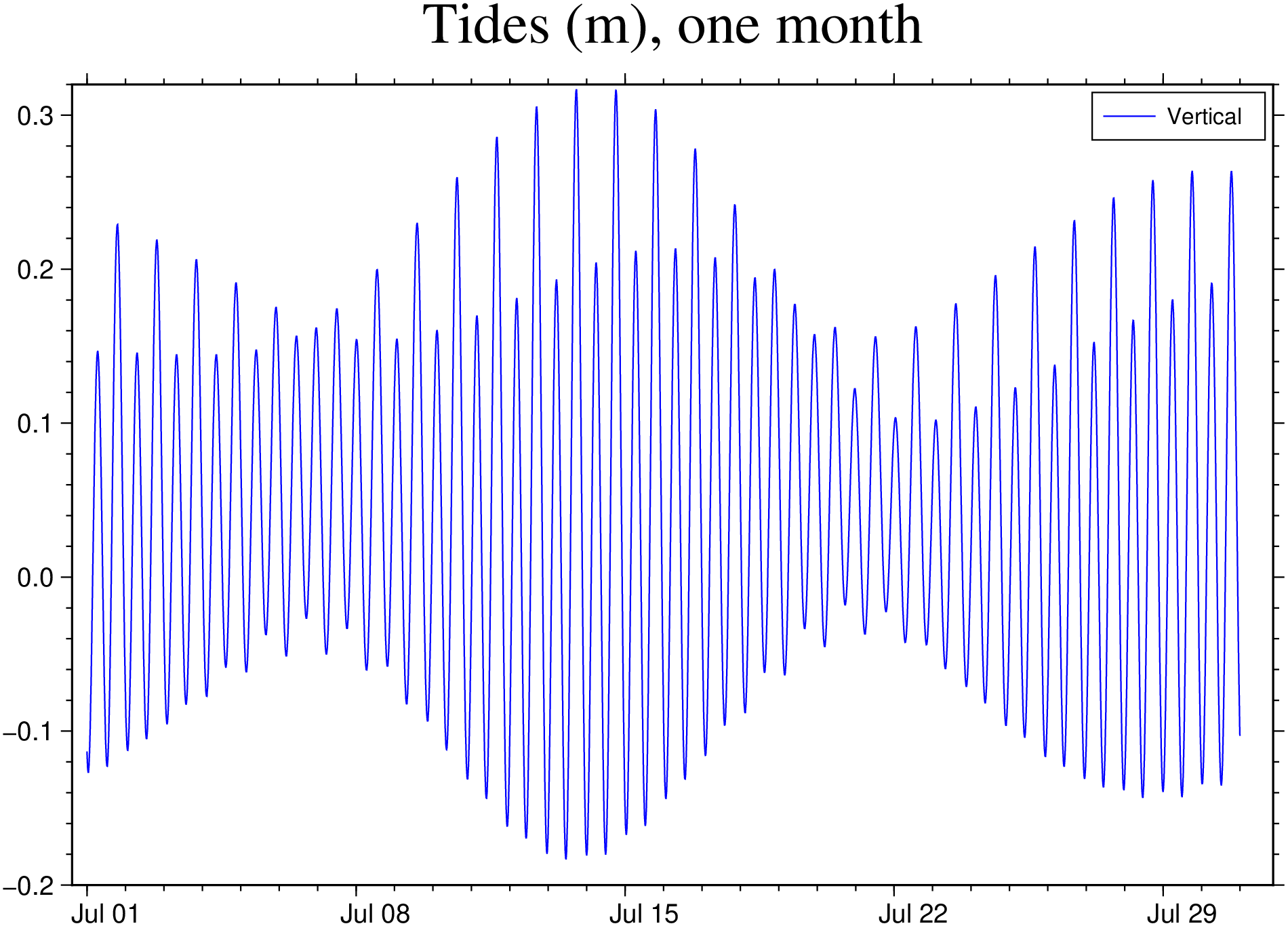Earth tides
Did you know that it's not only the oceans that have a tide? Yes, the solid Earth has tides as well, and they are not so small as one might imagine.
A global view
This example shows a global view of the vertical component of the Earth tide for a perticular data.
using GMT
G = earthtide(T="2022-07-07T12:00:00");
imshow(G, coast=true, colorbar=true, title="Earth tide at noon 7-July-2022")The 3 components
Now we show the three components of the Earth tide for a specific location (the Panama Cannal) and time interval (the 7'th July 2022).
First we compute the components that will come out in a GMTdataset with named columns. This is handy because we can refer to them by name instead of by column number.
D = earthtide(range=("2022-07-07T", "2022-07-08T", "1m"), location=(-82,9))| Time | East | North | Vertical |
|---|---|---|---|
| 1.65715e9 | -0.0186548 | -0.0120856 | 0.152718 |
| 1.65715e9 | -0.0187063 | -0.0123039 | 0.152364 |
| 1.65715e9 | -0.0187575 | -0.0125214 | 0.152003 |
| 1.65715e9 | -0.0188083 | -0.0127382 | 0.151636 |
| 1.65715e9 | -0.0188586 | -0.0129542 | 0.151263 |
Now plot the three of them with a legend
using GMT
plot(D[:Time, :Vertical], lc=:red, lw=1, legend=:Vertical,
title="Earth tide components (m) at Panama Cannal")
plot!(D[:Time, :East], lc=:green, lw=1, legend=:East)
plot!(D[:Time, :North], lc=:blue, lw=1, legend=:North, show=true)One month of tides
And now, let's see a full month of tidal data (vertical component).
using GMT
D = earthtide(range=("2022-07-01T", "2022-07-31T", "1m"), location=(-82,9));
plot(D[:Time, :Vertical], lc=:blue, legend=:Vertical, title="Tides (m), one month", show=true)
© GMT.jl. Last modified: November 06, 2025. Website built with Franklin.jl and the Julia programming language.
These docs were autogenerated using GMT: v1.33.1


